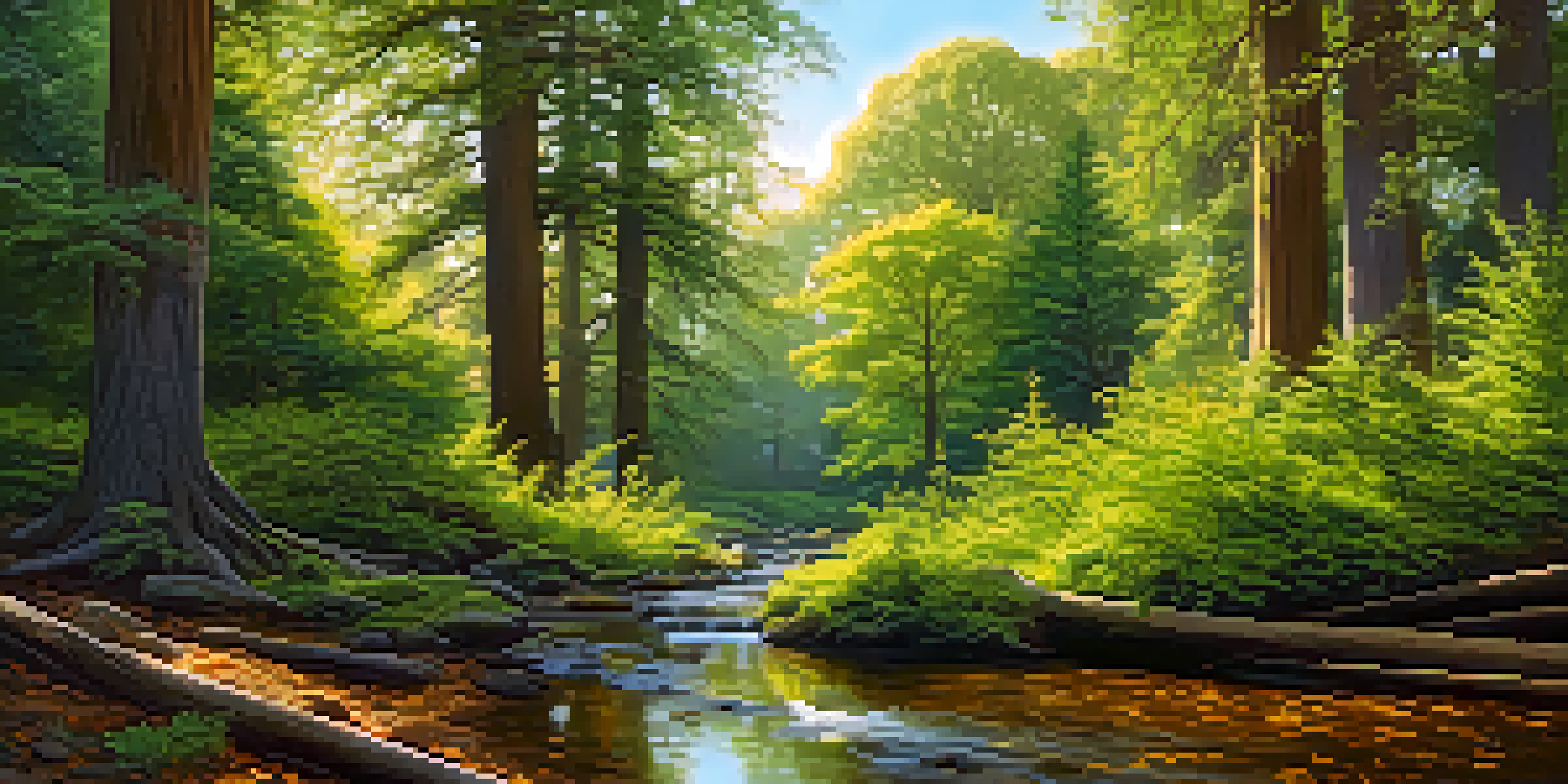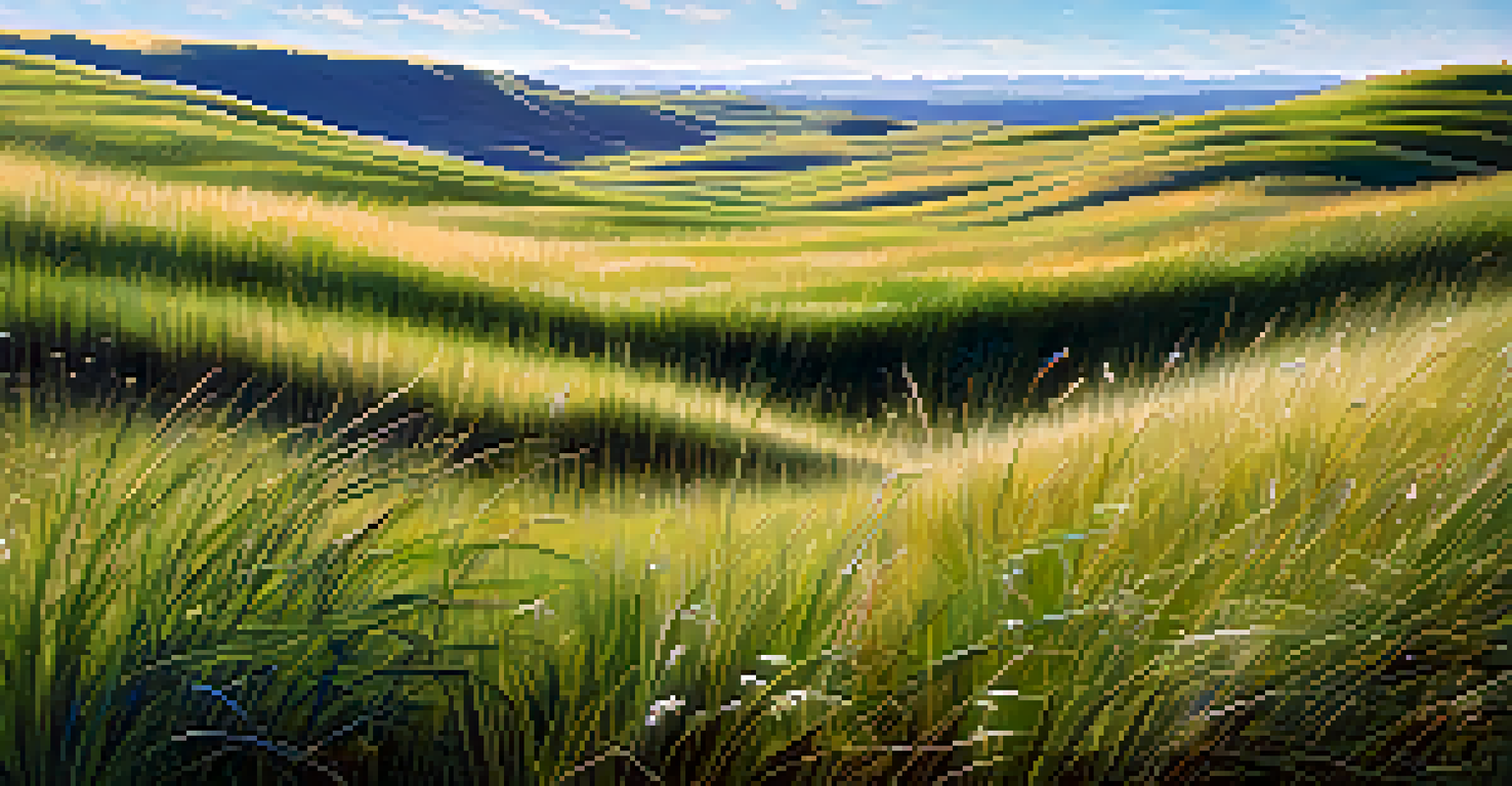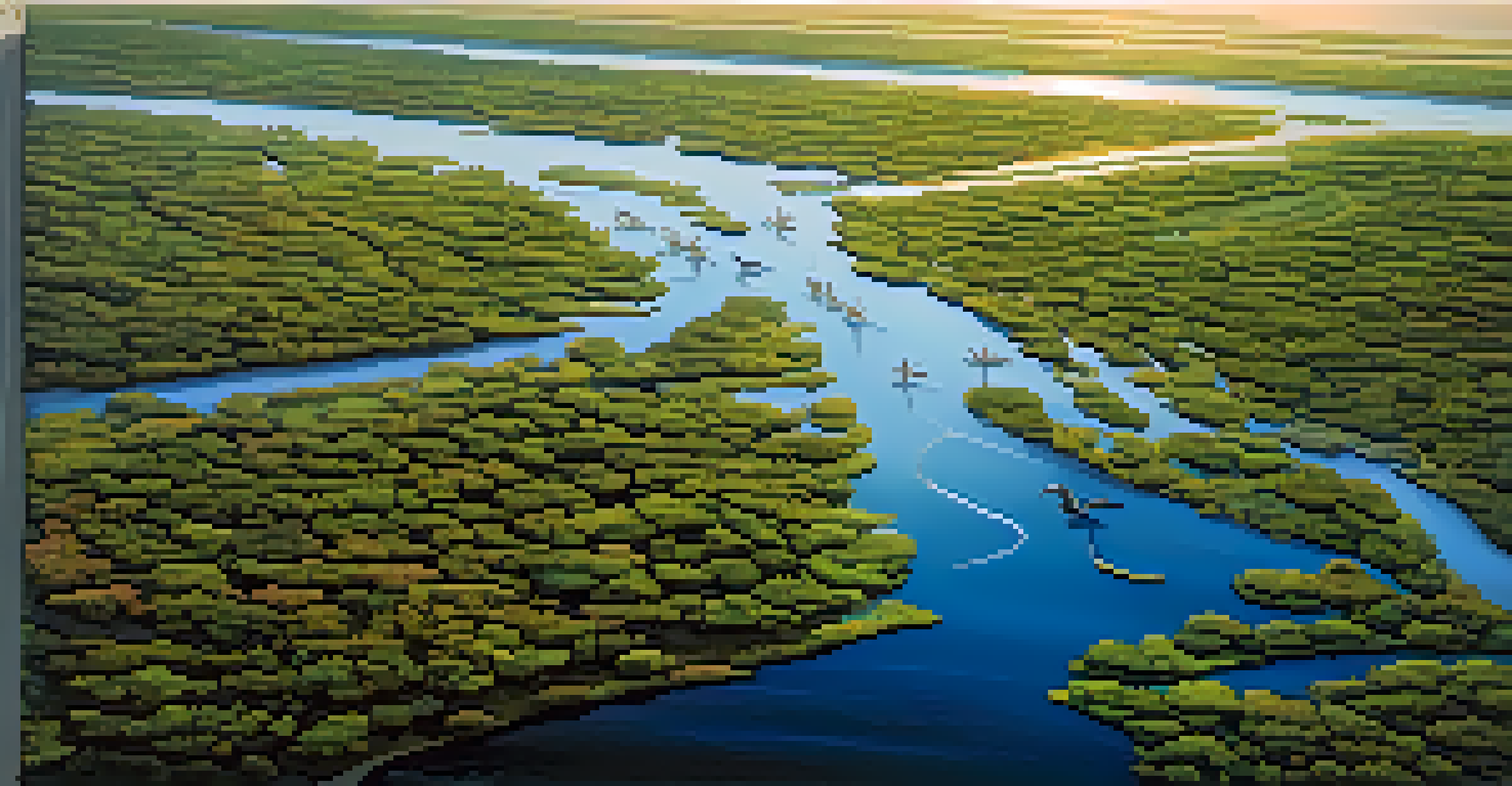Plants for Carbon Sequestration in Climate Change Mitigation

Understanding Carbon Sequestration and Its Importance
Carbon sequestration is the process of capturing and storing atmospheric carbon dioxide. This is crucial in combating climate change, as excess carbon dioxide contributes to global warming. By using natural methods, such as planting certain types of vegetation, we can effectively reduce greenhouse gases in the atmosphere.
The Earth does not belong to us: we belong to the Earth.
Plants play a significant role in this process through photosynthesis, where they absorb carbon dioxide and release oxygen. Trees are particularly effective, but various other plants also contribute to carbon absorption. Understanding the types of plants that excel at this is essential for effective climate mitigation strategies.
Moreover, preserving existing forests and green spaces is equally important. Each tree and plant contributes to a healthier ecosystem, thus supporting biodiversity while also tackling carbon emissions. In the following sections, we’ll explore specific plants that are champions of carbon sequestration.
Trees: The Heavyweight Champions of Carbon Capture
When it comes to carbon sequestration, trees are the undisputed champions. A mature tree can absorb around 48 pounds of carbon dioxide per year, making them invaluable allies in the fight against climate change. Species like oak, sequoia, and pine are particularly effective due to their size and longevity.

The dense wood and expansive root systems of these trees allow them to store significant amounts of carbon over long periods. Their ability to live for decades or even centuries means they can sequester carbon continuously throughout their life cycles. Planting a variety of trees can also promote a more resilient ecosystem.
Trees Are Key Carbon Capturers
Mature trees absorb significant amounts of carbon dioxide each year, making them vital in combating climate change.
Engaging communities in urban reforestation projects can enhance carbon capture. By planting trees in cities, we not only reduce carbon levels but also improve air quality and provide shade. Thus, integrating trees into urban planning is a win-win for both the environment and community health.
Grasses: The Unsung Heroes of Carbon Sequestration
While trees often steal the spotlight, grasses are powerful carbon sequesterers too. Grasses, particularly perennial varieties, have deep root systems that store carbon in the soil. This underground carbon storage is crucial for maintaining soil health and fertility.
In every walk with nature, one receives far more than he seeks.
Grasslands, such as prairies and savannas, can sequester carbon just as effectively as forests, if not more in some cases. By using practices like rotational grazing and no-till farming, we can enhance the ability of grasses to store carbon. These methods also promote biodiversity, making grasslands vital in the fight against climate change.
Additionally, native grasses are adapted to local climates and require less maintenance. This makes them ideal for restoration projects aimed at carbon sequestration. By embracing these unsung heroes, we can effectively utilize every inch of land for climate mitigation.
Wetlands: Nature's Carbon Storage Facilities
Wetlands are often overlooked in discussions about carbon sequestration, yet they are extraordinary carbon sinks. These ecosystems, which include marshes and swamps, can store carbon up to twice as effectively as forests. Their waterlogged conditions slow down the decomposition of organic materials, allowing carbon to accumulate.
In addition to carbon storage, wetlands provide critical habitat for wildlife and help in flood control. They act as natural filters, purifying water and protecting shorelines from erosion. Restoring and preserving wetland areas is a powerful strategy for enhancing carbon sequestration while also benefiting local ecology.
Grasses and Wetlands Store Carbon
Both grasses and wetlands are powerful carbon sinks, capable of sequestering carbon effectively while supporting biodiversity.
Engaging local communities in wetland restoration projects can amplify these benefits. By valuing wetlands as essential ecosystems rather than just unused land, we can secure a healthier environment for future generations.
Cover Crops: Boosting Soil Carbon Through Agriculture
Cover crops are an agricultural practice that can significantly enhance carbon sequestration. By planting crops like clover or rye during off-seasons, farmers can improve soil health and capture carbon. These plants not only protect the soil from erosion but also contribute organic matter that enriches the soil.
The roots of cover crops penetrate deep into the ground, creating channels for air and water while storing carbon in the process. This method supports sustainable agriculture by reducing the need for chemical fertilizers, which can be harmful to the environment. Farmers adopting cover cropping practices can increase their soil's productivity and resilience.
Moreover, integrating cover crops into crop rotation systems can prevent pest outbreaks and improve biodiversity. This holistic approach to farming is not only beneficial for carbon sequestration but also supports long-term agricultural sustainability.
Vines and Climbing Plants: Vertical Carbon Capture
Vines and climbing plants may not be as large as trees, but they contribute significantly to carbon sequestration. Plants like ivy and wisteria can cover walls and structures, effectively absorbing carbon dioxide while providing insulation. This dual benefit enhances energy efficiency in buildings, further reducing carbon footprints.
These plants have rapid growth rates and can cover substantial areas in a short time. Their ability to thrive in urban environments makes them excellent candidates for greening cities. By integrating climbing plants into urban landscaping, we can create more breathable spaces and improve air quality.
Community Engagement is Crucial
Involving local communities in planting and preserving carbon-sequestering plants can enhance climate mitigation efforts and strengthen community ties.
Additionally, vertical gardens filled with these plants can transform concrete jungles into green oases. This innovative approach not only captures carbon but also adds aesthetic value to urban settings, making our cities more livable.
Marine Plants: The Ocean's Carbon Storage Solution
While most discussions around carbon sequestration focus on land, marine plants also play a crucial role. Seagrasses, for example, can store carbon at rates much higher than terrestrial forests. These underwater plants capture carbon dioxide and sequester it in the sediment beneath them, making them essential for ocean health.
Moreover, marine plant ecosystems, like mangroves and salt marshes, provide additional benefits. They serve as nurseries for fish, protect coastlines, and improve water quality. Protecting these habitats is vital not only for carbon sequestration but for overall marine biodiversity.

By promoting the preservation and restoration of marine ecosystems, we can enhance their carbon storage capacity. Engaging coastal communities in conservation efforts can ensure a healthier ocean for future generations while effectively combating climate change.
The Role of Community in Promoting Carbon-Sequestering Plants
Community engagement is essential in promoting the use of carbon-sequestering plants. Local initiatives can educate citizens about the importance of planting trees, grasses, and other vegetation to combat climate change. Workshops, tree-planting events, and educational programs can inspire people to take action.
By fostering a sense of stewardship towards local ecosystems, communities can create lasting change. Neighborhoods can work together to develop green spaces, plant gardens, and restore natural habitats. This collective effort not only enhances carbon sequestration but also strengthens community bonds.
Additionally, involving schools and youth in environmental initiatives can cultivate a generation that values the planet. By teaching children about the importance of plants in carbon sequestration, we can inspire future leaders to prioritize sustainability. Together, we can make a significant impact in the fight against climate change.